Passengers 86 plus 4 hijackers Total fatalities 4 (1 crew, 3 hijackers) | Date 13 October 1977 Summary Aircraft hijacking | |
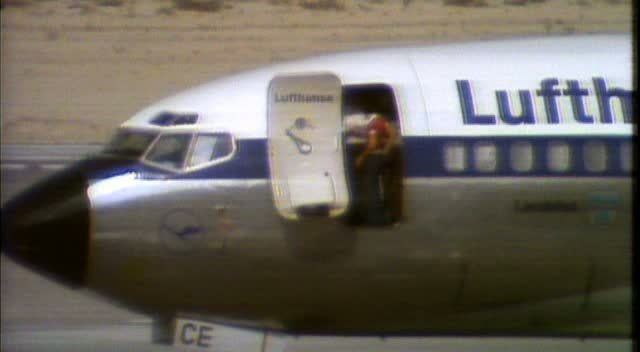 | ||
Site Initially over the MediterraneanSea, south of the French coast;subsequently Mogadishu International Airport, Somalia Injuries (non-fatal) 5 (1 flight attendant, 3 passengers, 1 hijacker) Survivors 91 (All passengers, 4 crew, 1 hijacker) Similar Japan Airlines Flight 472, Air France Flight 8969, El Al Flight 426 hijacking, Malaysian Airline System Fl, Operation Entebbe | ||
Lufthansa flight 181 landshut hijacking mogadishu airport somalia 1977 somaliarchive
Lufthansa Flight 181 was a Boeing 737–230 Adv aircraft named Landshut that was hijacked on 13 October 1977 by four members of the Popular Front for the Liberation of Palestine, who called themselves Commando Martyr Halima. The objective of the hijacking was to secure the release of imprisoned Red Army Faction leaders. On 18 October the aircraft was stormed by the West German counter-terrorism group GSG 9 in Mogadishu, Somalia, and all 86 passengers rescued. The rescue operation was codenamed Feuerzauber (German term for "Fire Magic"). The hijacking is considered to be part of the German Autumn.
Contents
- Lufthansa flight 181 landshut hijacking mogadishu airport somalia 1977 somaliarchive
- Lufthansa flight 181 the mogadischu hijacking
- Lufthansa crew
- Key German rescue personnel
- Hijacking
- Rome
- Larnaca
- Bahrain
- Dubai
- Aden
- Mogadishu
- Operation Feuerzauber
- Aftermath
- The aircraft
- Notable hostages
- In popular culture
- References
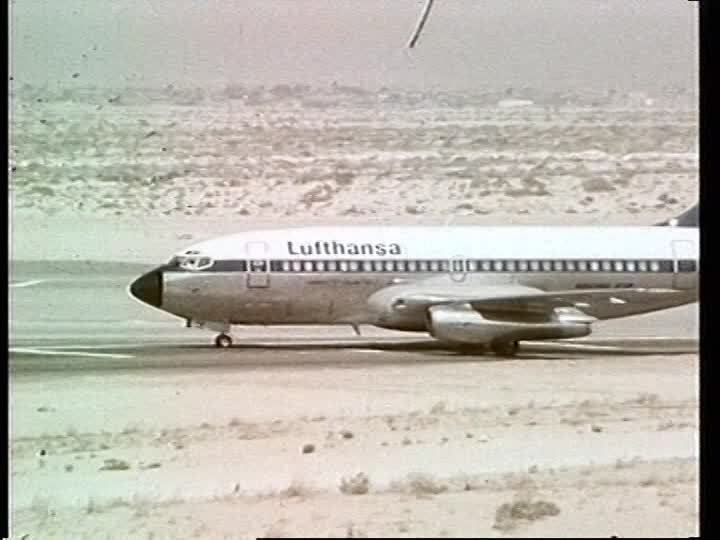
Lufthansa flight 181 the mogadischu hijacking
Lufthansa crew
Two flight crew and three cabin crew operated the round-trip flight from Frankfurt to Palma de Mallorca:
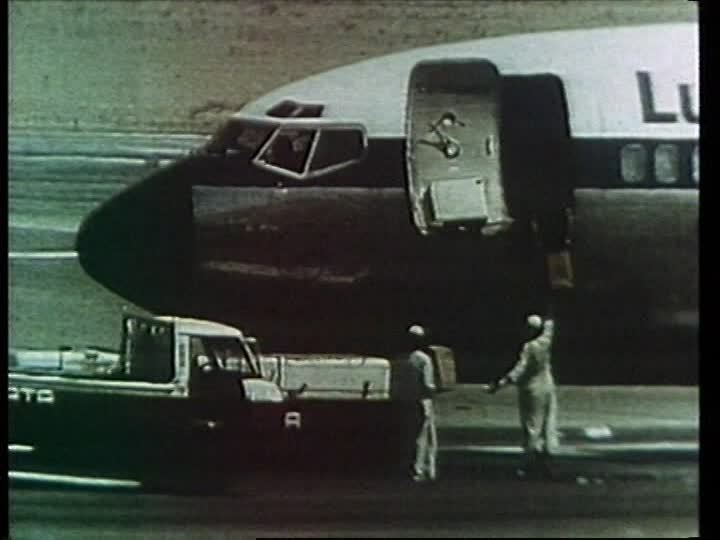
Key German rescue personnel
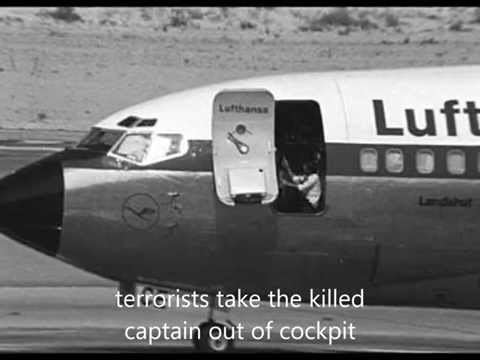
Hijacking
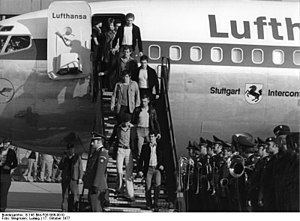
At 11:00 on Thursday 13 October 1977, Lufthansa flight LH 181, a Boeing 737 named Landshut, took off from Palma de Mallorca en route to Frankfurt with 86 passengers and five crew, piloted by Jürgen Schumann, with co-pilot Jürgen Vietor at the controls. About 30 minutes later, as it passed over Marseilles, the aircraft was hijacked by four militants calling themselves "Commando Martyr Halima" – in honour of fellow militant Brigitte Kuhlmann, who had been killed in Operation Entebbe the previous year. Their leader was a Palestinian named Zohair Youssif Akache (23, male), who adopted the alias "Captain Martyr Mahmud". The other three were Suhaila Sayeh (22, female) – a Palestinian – and two Lebanese people, Wabil Harb (23, male) and Hind Alameh (22, female). Akache ("Mahmud") burst into the cockpit with a loaded pistol in his hand and ordered Vietor to join the passengers, leaving Schumann to take over the flight controls. Mahmud ordered Schumann to fly to Larnaca in Cyprus but was told that they had insufficient fuel and would have to land in Rome first.
Rome
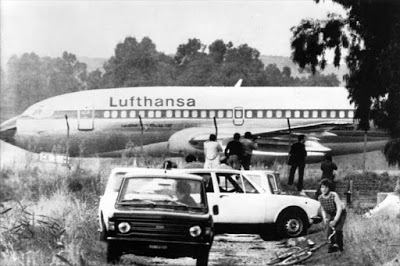
The aircraft changed course and landed in Rome for refuelling. Acting in concert with the Red Army Faction group, the Siegfried Hausner Commando, who had kidnapped West German industrialist Hanns Martin Schleyer five weeks earlier, demanded the release of 10 Red Army Faction (RAF) terrorists detained at the JVA Stuttgart-Stammheim prison plus two Palestinian compatriots held in Turkey and US$15 million. German Interior Minister Werner Maihofer contacted his Italian counterpart Francesco Cossiga and suggested that the plane's tyres should be shot out to prevent the aircraft from leaving. After consulting his colleagues Cossiga decided that the most desirable solution for the Italian government was to get rid of the problem altogether. The aircraft was refuelled, which enabled Mahmud to instruct Vietor (who had been allowed back into the cockpit on the ground) to take off for Larnaca at 17:45 without even obtaining clearance from Rome air traffic control.
Larnaca
The Landshut landed in Larnaca at 20:28. After about an hour, a local PLO representative arrived at the airport and over the radio tried to persuade Mahmud to release the hostages. This only provoked a furious response from Mahmud who started screaming at him over the intercom in Arabic until the PLO representative gave up and left. The aircraft was then refuelled and Schumann asked flight control for a routing to Beirut. He was told that Beirut Airport was blocked and closed to them and Mahmud just said to him that they would go to Damascus instead. The Landshut took off at 22:50 heading for Beirut but was refused landing permission. After also being denied landing permission in Damascus, Baghdad and Kuwait they headed for Bahrain.
Bahrain
Schumann was told by a passing Qantas airliner that Bahrain Airport was closed. He radioed flight control and told them they had insufficient fuel to go elsewhere and despite being told again that the airport was closed he was suddenly given an automatic landing frequency by the flight controller. They finally landed in Bahrain at 01:52 the following morning. On arrival the aircraft was immediately surrounded by armed troops and Mahmud radioed the tower that unless they were withdrawn he would shoot the co-pilot. After a stand-off with the tower, with Mahmud setting a five‑minute deadline and holding a pistol to Vietor's head, the troops were subsequently withdrawn. The aircraft was then refuelled and they took off for Dubai.
Dubai
Approaching Dubai, they were again refused landing permission. Overflying the airport in the early light of dawn they could see that the runway was blocked with trucks and fire engines. Running short of fuel Schumann told the tower they would have to land anyway. As they made a low pass over the airport they saw that the obstacles were being removed, and at 05:40 (14 October) Vietor was able to make a normal landing on the main runway.
In Dubai the terrorists asked the tower to supply water, food, medicine and newspapers, and to take away the rubbish. Captain Jürgen Schumann was able to communicate the number of hijackers on board as well as that they were two men and two women. In an interview with journalists, this information was revealed by Dubai's Sheikh Mohammed, then Minister of Defence. The hijackers learned about this–possibly from the radio–causing Mahmud to threaten to kill Schumann. The aircraft remained on the ground at Dubai all through the day and night. The following morning Mahmud threatened to start shooting hostages if the aircraft was not refuelled and the Dubai authorities finally agreed. In the meantime, both Hans-Jürgen Wischnewski, the West German minister responsible for handling the hijacking, and Colonel Ulrich Wegener, commander of the elite German anti-terrorist squad GSG 9, had arrived in Dubai to try to persuade the government to agree to let GSG 9 commandos into Dubai to storm the aircraft. However, after permission was granted for GSG 9 commandos to storm the aircraft, SAS and GSG 9 senior operatives insisted on additional combat exercise and dry-runs on an adjacent airstrip. Reports suggest up to 2720 minutes (or 45 hours) of supplementary training was conducted whilst based in Dubai (over a period of 80 hours). While Wegener was considering his options, the Landshut had completed its refuelling and at 00:20 (17 October) it took off, heading for Salalah in Oman, where landing permission was once again denied, and a course to Aden in South Yemen, at the limit of their fuel range, was established.
Aden
In Aden they were yet again denied landing permission, and the two main runways were blocked by vehicles. The plane was running low on fuel so the pilot Vietor had no choice but to make an emergency landing on a sand strip almost parallel to both runways. The Aden authorities told the hijackers that they would have to leave but the two pilots were sceptical of the condition of the aircraft after an emergency landing on sandy ground. Mahmud consequently gave Schumann permission to leave the aircraft in order to check the condition of the landing gear following the rough landing, and the engines. However Schumann did not immediately return to the plane after the inspection, even after numerous attempts to recall him or even a threat to blow up the aircraft on the ground. The reasons for his prolonged absence remain unclear and some reports suggest that Schumann asked the Yemeni authorities to prevent the continuation of the flight and to accede to the terrorists' demands.
After this Schumann returned to the aircraft to face the wrath of Mahmud, who forced him to kneel on the floor in the passenger cabin and then shot him in the head without giving him a chance to explain himself. The plane was refuelled at 06:00 on 17 October and, coaxed by co-pilot Jürgen Vietor, it slowly and laboriously took off from Aden on course for the Somali capital of Mogadishu.
Mogadishu
At around 06:22 local time, the Landshut made an unannounced and perfect landing in Mogadishu. The leader Mahmud (Akache) told Vietor that he had performed a super-human accomplishment and that consequently he was free to leave the aircraft, since they were not planning to fly elsewhere. However Vietor opted to remain with the onboard passengers and crew. Schumann's body was thrown onto the tarmac and an ultimatum was set for the RAF prisoners to be released by 16:00 local time or the aircraft would be blown up. After they had poured the duty-free spirits over the hostages in preparation for the destruction of the aircraft, the hijackers were told that the West German government had agreed to release the RAF prisoners but that their transfer to Mogadishu would take several more hours, so they agreed to extend the deadline to 02:30 the next morning (18 October).
Operation Feuerzauber
Meanwhile, while the West German Chancellor Helmut Schmidt attempted to negotiate an agreement with Somali President Siad Barre, special envoy Hans-Jürgen Wischnewski and GSG 9 commander Ulrich Wegener arrived at Mogadishu airport from Jeddah in a Lufthansa aircraft co-piloted by Rüdiger von Lutzau (Gabriele Dillmann's fiancé). In West Germany, a team of 30 GSG 9 commandos under their deputy commander Major Klaus Blatte had assembled at Hangelar airfield near Bonn awaiting instructions. The commandos took off from Cologne-Bonn Airport on a Boeing 707 on Monday morning (17 October) planning to fly to Djibouti–within a short flying time of Somalia–while Schmidt negotiated with the Somalis. When they were flying over Ethiopia, agreement was reached and permission was given to land at Mogadishu. The aircraft landed at 20:00 local time with all lights out to avoid detection by the hijackers.
After four hours to unload all of their equipment and to undertake the necessary reconnaissance, Wegener and Blatte finalized the assault plan, scheduled to start at 02:00 local time. They decided to approach from the rear of the aircraft in its blind spot in six teams using black-painted aluminium ladders to gain access to the aircraft through the escape hatches under the fuselage and via the doors over the wings. In the meantime a fictitious progress report on the journey being taken by the released prisoners was being fed to Mahmud by the German representatives in the airport tower. Just after 02:00, Mahmud was told that the plane carrying the prisoners had just departed from Cairo after refuelling and he was asked to provide the conditions of the prisoner/hostage exchange over the radio.
Several minutes before the rescue, Somali soldiers lit a fire 65 yards in front of the jet, as a diversionary tactic, prompting Akache and two of the other three hijackers to rush to the cockpit to observe what was going on, and isolating them from the hostages in the cabin. At 02:07 local time, the GSG 9 commandos silently climbed up the blackened aluminium ladders and opened the emergency doors, Wegener, at the head of one group, opened the forward door, and two other groups, led by Sergeant-Major Dieter Fox and Sergeant Joachim Huemmer stormed the aircraft by using the ladders to climb up onto the wings and opened both emergency doors at the same time. Shouting in German for the passengers and crew to hit the floor, the commandos shot and killed two of the terrorists (Wabil Harb and Hind Alameh), and wounded Zohair Akache and Suhaila Sayeh. Akache died of his injuries hours later. One GSG 9 commando was wounded by return fire from the terrorists. Three passengers and a flight attendant were slightly wounded in the crossfire. An American passenger aboard the plane described the rescue: "I saw the door open and a man appears. His face was painted black and he starts shouting in German 'We're here to rescue you, get down!' and they started shooting."
The emergency escape chutes were deployed and passengers and crew were ordered to quickly evacuate the aircraft. At 02:12 local time, just five minutes after the assault had commenced, the commandos radioed: "Frühlingszeit! Frühlingszeit!" ("Springtime! Springtime!"), which was the code word for the successful completion of the operation. A few moments later a radio signal was sent to Chancellor Schmidt in Bonn: "Four opponents down – hostages free – four hostages slightly wounded – one commando slightly wounded".
The rescuers escorted all 86 passengers to safety, and a few hours later they were all flown to Cologne-Bonn Airport, where they landed in the early afternoon of Tuesday 18 October, and were given a hero's welcome.
Aftermath
News of the rescue of the hostages was followed by the deaths of RAF members Andreas Baader, Gudrun Ensslin and Jan-Carl Raspe at JVA Stuttgart-Stammheim. RAF member Irmgard Möller also attempted suicide but survived her injuries. On Wednesday 19 October the body of Hanns-Martin Schleyer, who had been kidnapped by the RAF some five weeks prior to the hijacking, was found in the boot of a car on a side street in Mulhouse after the RAF heard of the deaths of their comrades. They contacted the Paris newspaper Libération to announce his 'execution'; a subsequent post-mortem examination indicated that he had been killed the previous day.
After the Landshut crisis the German government stated that it would never again negotiate with terrorists (as it previously had with the Lufthansa Flight 649 and 615 hijackers). Chancellor Helmut Schmidt was widely praised among western countries for his decision to storm the aircraft to rescue the hostages, although some criticized the risk-taking act.
The aircraft
While the hijackers had control of the plane it had travelled 10,000 kilometres (6,200 mi). The Landshut was a Boeing 737-230C (manufacturers serial number 20254, Boeing line number 230, registration D-ABCE) named after the city of Landshut in Bavaria. It was returned to service by Lufthansa after a thorough check and overhaul a few weeks later. It was sold by Lufthansa in 1985 to new US carrier Presidential Airways, ultimately ending up in the fleet of Brazilian carrier TAF Linhas Aéreas. TAF stopped service of the aircraft under the registration PT-MTB in January 2008, owing to severe damage. The name Landshut is still used by Lufthansa today, currently on an Airbus A330 (registration: D-AIKE, manufacturer's serial number 636).
Notable hostages
In popular culture
The song "122 Hours of Fear" by The Screamers, recorded in 1978, was inspired by the hijacking.
The song "RAF" by Brian Eno and Snatch (Judy Nylon/Patti Palladin) was created using sound elements from a Baader Meinhof ransom message available by public telephone at the time of the hijacking.
The hijacking and the hostage rescue operation were portrayed in two German television films: Todesspiel (The Death Game) in 1997 and Mogadischu, directed by Roland Suso Richter, in 2008.
The hijacking and rescue was also portrayed in the Black Ops television series, season 2 episode 6, titled "Operation Fire Magic".
